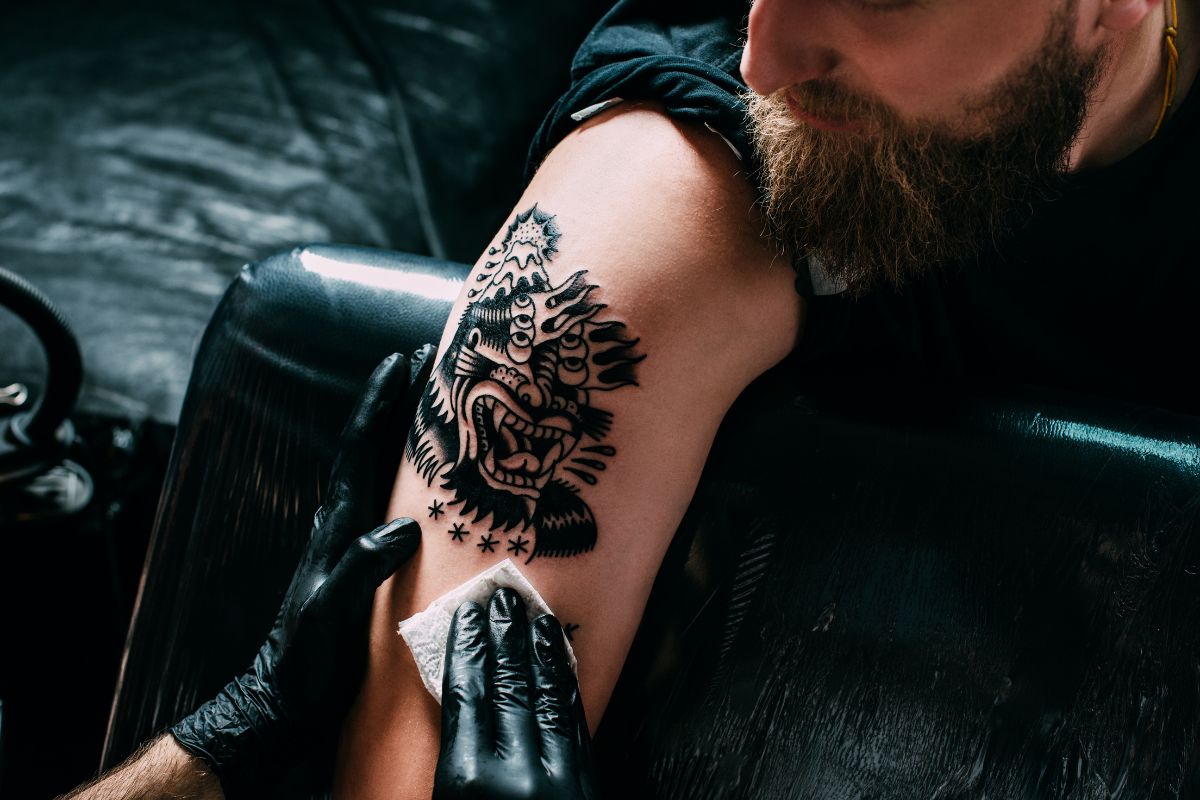Tattoos express more than artistic creativity. They are also a fascinating phenomenon of science. How do they get under your skin? How do they stay there for years? And how do they change over time? In this article, we will explore the science of tattoos, how they work, how they fade, how to take care of them, and how to remove them. Without further ado, let’s get started.
Table of Contents
How Do Tattoos Work?
A recent survey conducted by the Pew Research Center found that 32% of Americans have at least one tattoo, while 22% have multiple tattoos. That means nearly one in three Americans have inked their skin with some design, ranging from simple initials to elaborate artworks. That brings to mind the question of how tattoos work.
Tattoos are created by injecting ink into the skin using a machine with one or more needles. The needles penetrate the skin at a speed of 50 to 3,000 times per minute, depending on the machine’s specifications. This results in the permanent placement of the ink in the dermis, which is the second layer of the skin.
But how does the ink stay in the skin without being washed away by the blood or removed by the immune system? The answer lies in the cells called macrophages. Macrophages are part of the body’s defense mechanism against foreign substances and infections. They are attracted to the site of the wound and engulf the ink particles, trying to eliminate them from the body.
However, some ink particles are too large to be digested by the macrophages and remain trapped inside their cell membranes.
The macrophages that contain the ink then migrate to the nearby connective tissue, forming clusters visible as the tattoo. The macrophages also secrete chemical signals that promote collagen synthesis, a vital protein responsible for the skin’s structural integrity and toughness. The collagen forms a network of fibers around the ink-filled macrophages, creating a stable environment for the tattoo.
The tattoo is dynamic, though. It can change over time due to various factors, such as aging, sun exposure, skin stretching, and fading. In the next section, we will explore how tattoos fade and how you can get them to remove them.
How Do Tattoos Fade?
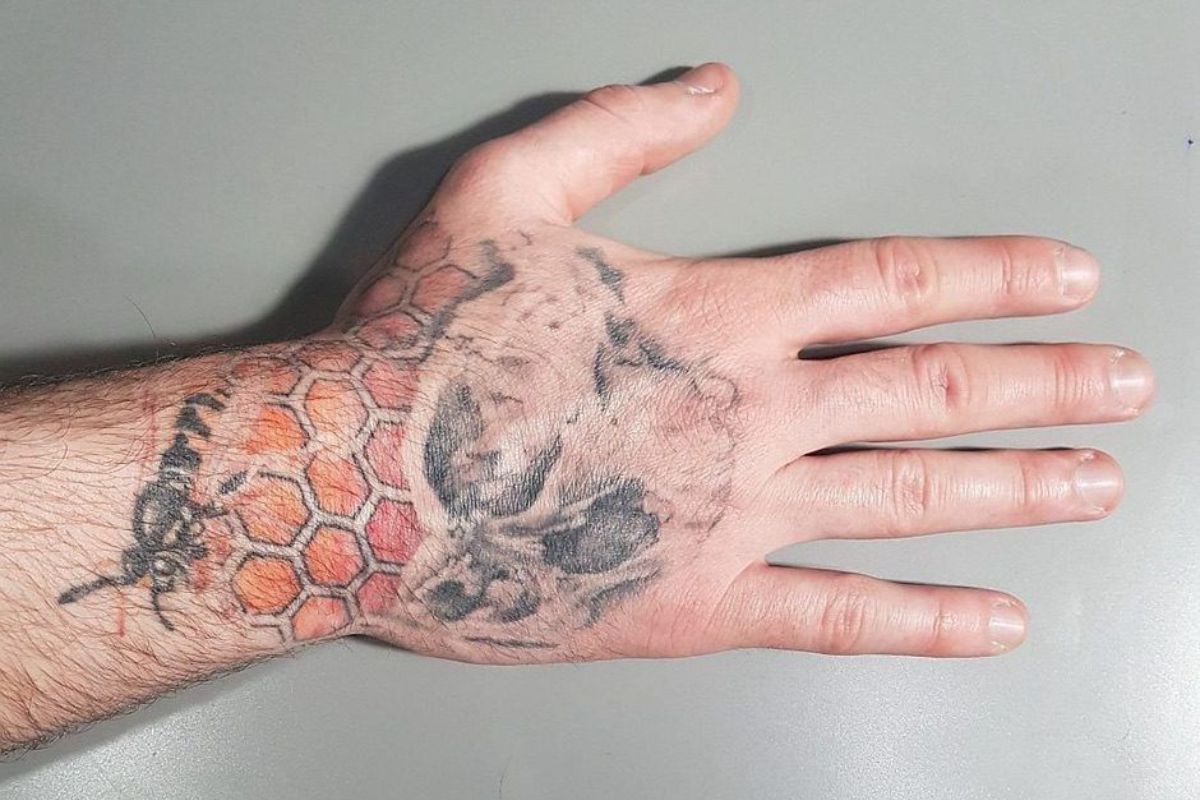
Tattoos are not permanent in the sense that they never change. Over time, various factors can cause tattoos to fade or lose their original appearance. Some of these factors are:
Sun exposure: Exposure to the sun’s ultraviolet rays can lead to the degradation of ink molecules in the skin, resulting in fading or alteration of tattoo color. Therefore, it is crucial to shield your tattoo from the sun by using sunscreen, wearing protective clothing, or using accessories.
Skin aging: As you age, your skin loses its elasticity and collagen, which can affect the shape and size of your tattoo. Your tattoo may stretch, shrink, or sag along your skin, making it look distorted or blurry.
Skin type: Your skin type can also influence how your tattoo fades. People with oily skin tend to have more sebum production, which can dilute the ink and make it fade faster. People with dry skin may have more flaking and peeling, affecting the tattoo’s appearance.
Ink quality: The quality and type of ink used for your tattoo can also affect how it fades. Some colors, such as yellow, pink, and white, are more prone to fading than others, such as black, blue, and red. Some inks may also contain impurities or allergens, which can cause inflammation or infection in the skin, leading to fading or scarring.
Tattoo location: The location of your tattoo can also determine how fast it fades. Areas exposed to more friction, such as the hands, feet, elbows, and knees, tend to fade faster than more protected areas, such as the chest, back, or thighs.
How to Take Care of Tattoos
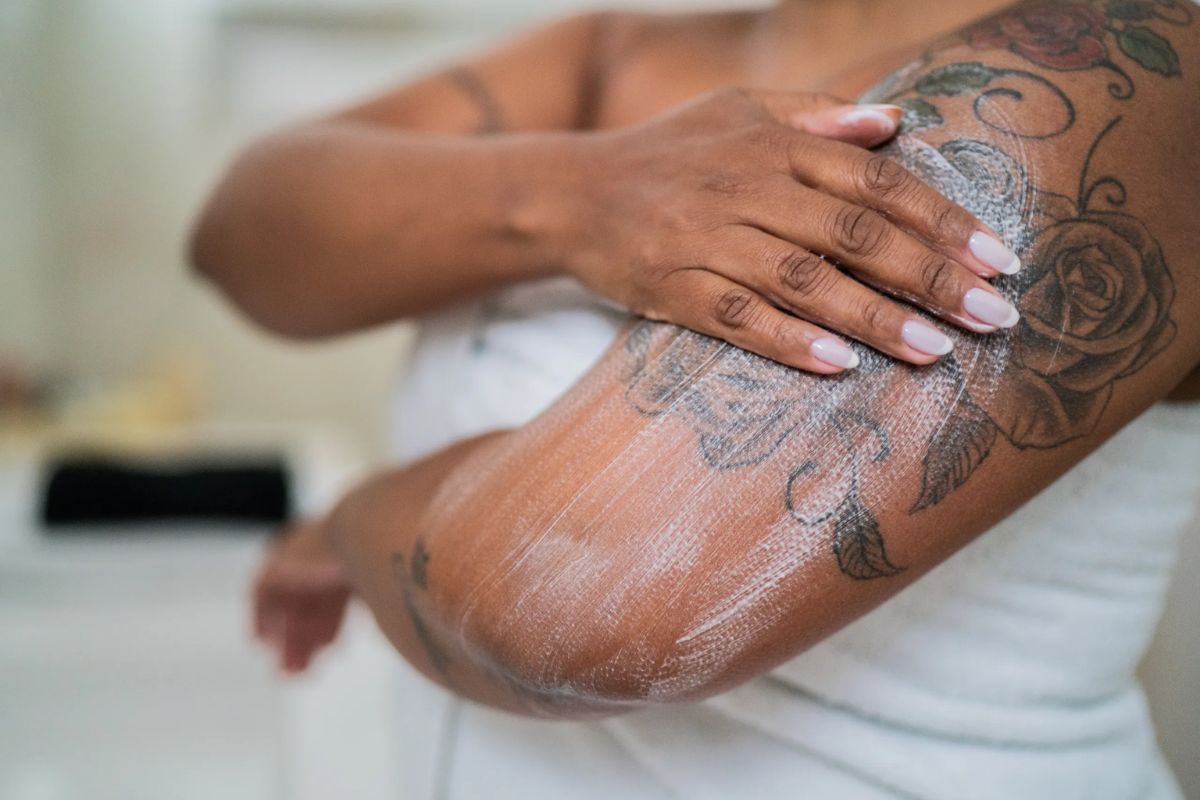
Tattoos are a form of art and self-expression, but they also require proper care to heal well and stay vibrant. Whether you have a new or an old tattoo, here are some tips to keep it in good shape.
New Tattoos
Proper care for a new tattoo is crucial to prevent infection and damage. It is essential to follow these steps to ensure proper healing:
- First, keep the bandage on for the recommended time, as instructed by your tattoo artist. The duration may differ depending on the size and type of your tattoo.
- Next, gently wash your tattoo with warm water and unscented soap once or twice a day. Be sure to pat it dry with a clean paper towel, avoiding any rubbing or scratching.
- Apply a thin layer of unscented moisturizer or ointment as directed by your tattoo artist.
- Please refrain from using petroleum-based products, which can block pores and hinder healing.
- Avoid submerging your tattoo in water, such as pools, hot tubs, or baths, for at least two weeks. Showers are acceptable, but you must avoid direct streams of water on the tattoo.
- Protect your tattoo from direct sunlight to prevent ink fading and potential damage to the skin.
- Wear loose clothing that covers your tattoo, or apply sunscreen with at least SPF 30 if you have to go outside.
- Do not pick at scabs or peeling skin on your tattoo to prevent scarring and infection. Let them fall off naturally.
- Temporary swelling, redness, and itching may occur initially but should fade over time. Seek medical help if you notice signs of infection like pus, fever, or severe pain.
Old Tattoos
An old tattoo may not need as much attention as a new one, but it still needs maintenance to keep it fresh and bright. To properly care for your old tattoo, it is essential to follow these tips:
- Keep your skin hydrated by drinking plenty of water and regularly applying moisturizer. It can improve the elasticity and overall appearance of your skin and tattoo.
- Protect your tattoo from sun damage using SPF 30 sunscreen or protective clothing when outside.
- Avoid rapid weight changes to prevent distortion and premature aging of the ink and skin. Maintain a healthy diet and exercise regularly.
- Consider getting a touch-up if your tattoo has faded or become blurred over time. It can restore the color and clarity of your tattoo, giving it a refreshed appearance.
Consult your tattoo artist for the best options and prices to keep your old tattoo vibrant and looking its best long-term.
How Can Tattoos Be Removed?
If you have found yourself with a tattoo you now regret or no longer desire, you may wonder if there is a way to remove it. Fortunately, there are indeed multiple methods for tattoo removal; however, it is essential to note that these methods are complex, inexpensive, and painless. Removing a tattoo can be lengthy, costly, and uncomfortable. Additionally, there is no guarantee of complete or satisfactory results. It is crucial to thoroughly understand the various tattoo removal methods and how they work before deciding.
Laser Removal
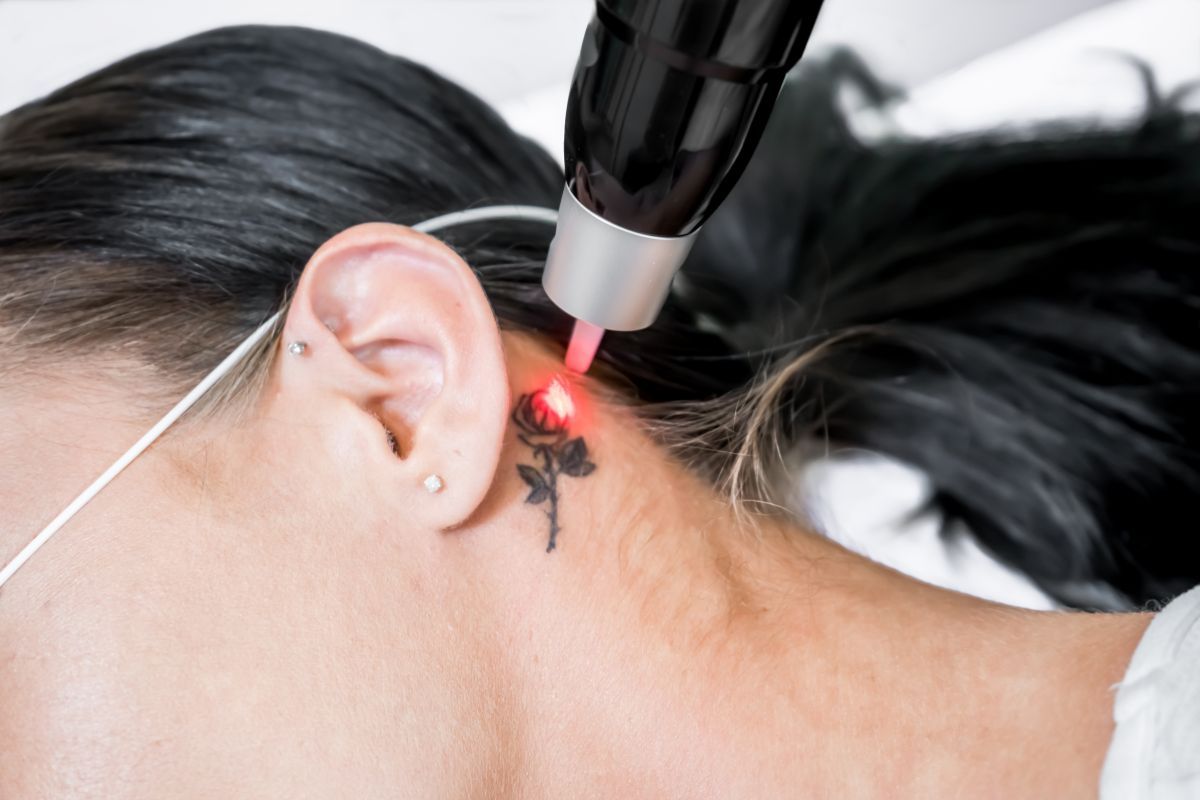
Laser removal is the most widely used and effective method of tattoo removal. It involves using high-intensity laser beams to break up the ink particles in the skin so that they can be absorbed and eliminated by the body’s natural processes. The number of sessions required for this type of treatment varies depending on factors such as the size and color of the tattoo. These sessions are usually spaced several weeks apart for adequate skin healing. Laser removal may result in side effects such as pain, swelling, blistering, scarring, and changes in skin pigment.
Surgical Removal
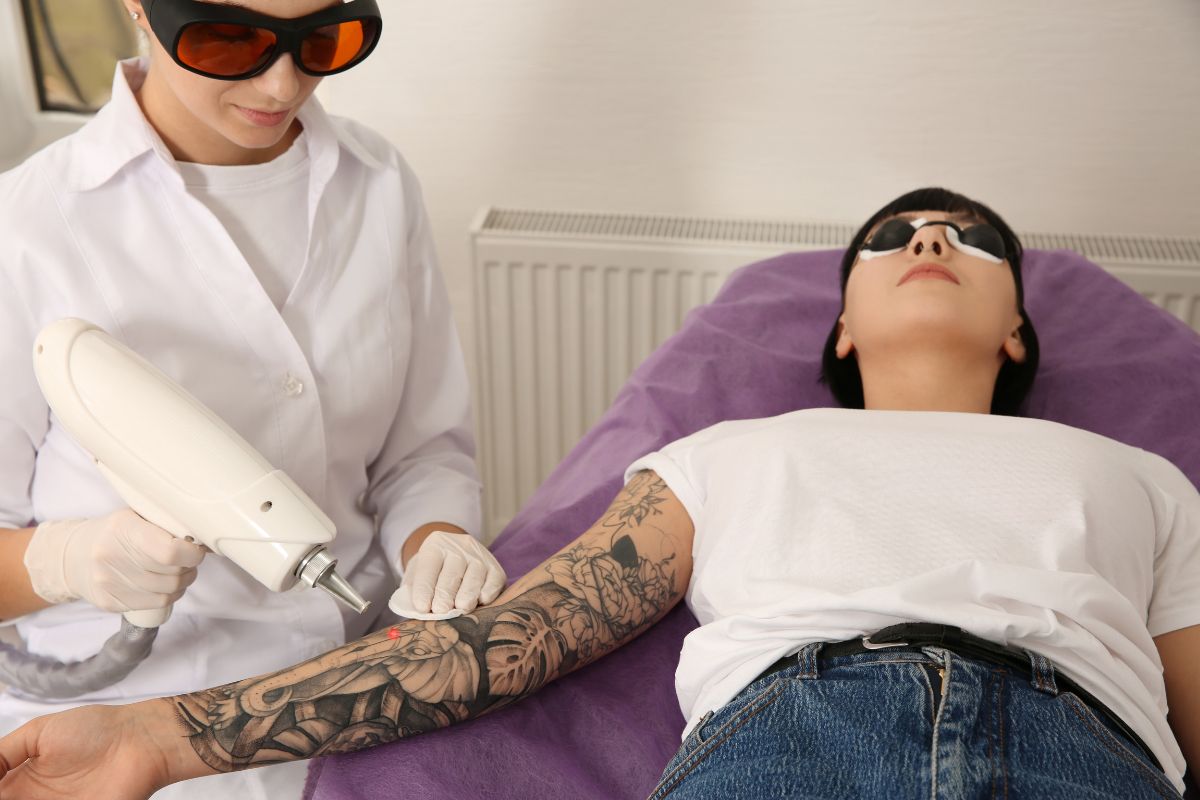
Surgical removal is a method that involves excising the tattooed skin and suturing the wound closed. This procedure is typically performed under local anesthesia and can successfully remove small tattoos. However, it can also cause scarring, infection, and bleeding. Surgical removal is not recommended for large or complex tattoos, as it can result in significant skin loss and deformity.
Dermabrasion
This method involves sanding or scraping the tattooed skin with a rotating device. Dermabrasion can remove the outer layers of the skin and some of the ink, but it can also damage the deeper layers of the skin and cause bleeding, infection, and scarring. Dermabrasion is impractical for removing deep or colorful tattoos and can cause skin color and texture changes.
Chemical Peels
Chemical peels are a technique used to eliminate tattoos by utilizing a chemical solution to exfoliate the outer layers of skin and remove some tattoo ink. The strength and depth of the peel may differ depending on the specific type and concentration of the chemical utilized.
It is worth noting, however, that chemical peels carry potential risks such as pain, burning, redness, swelling, and scarring. Chemical peels are not very practical for removing deep or colorful tattoos and can also cause skin color and sensitivity changes.
Bottom Line
Tattoos are a fascinating combination of art and science. Tattoos are an art of self-expression. Over time, they may fade due to various factors such as sun exposure, aging, and individual skin characteristics. While there are methods to remove tattoos, such as laser removal, surgical removal, dermabrasion, and chemical peels, they are not without risks and may not guarantee complete removal.
